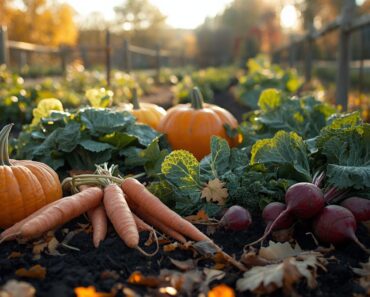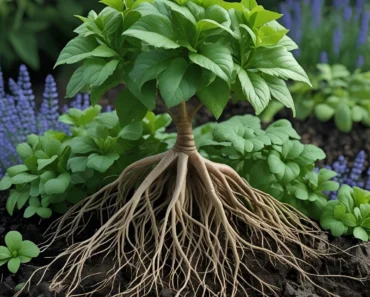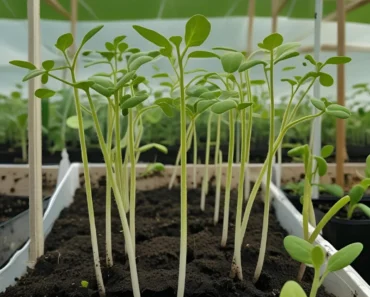Mulching is one of the most transformative and practical tools in home landscaping and gardening. When used correctly, mulch has the power to improve soil, encourage healthier plants, reduce maintenance, and create a visually unified yard. However, it’s equally important to understand when mulching isn’t appropriate, as improper use can undermine plant health or waste resources. This guide provides an in-depth exploration of how to use mulch effectively—and the scenarios where you should think twice.waynesborogardens+2

Benefits of Mulching: Why Mulch Matters
Mulch is any material—organic or inorganic—spread over the soil surface to provide a protective barrier. Its benefits include:
-
Moisture Retention: Mulch dramatically reduces water evaporation, keeping roots moist and reducing irrigation needs, especially crucial during dry, hot weather.scotts+1
-
Weed Suppression: By blocking sunlight, mulch stifles seedlings of weeds and limits seed germination, minimizing competition for nutrients.tedsgardens+2
-
Soil Temperature Regulation: Mulch insulates soil, protecting plant roots from temperature extremes. It keeps roots cooler in summer and provides frost protection in winter.gauldnurseries+1
-
Soil Improvement: Organic mulches break down over time, improving soil structure, promoting earthworm activity, and adding nutrients, particularly beneficial for vegetable and flower gardens.waynesborogardens+2
-
Erosion Control: Mulch lessens the impact of heavy rainfall, holding soil in place and preventing runoff and compaction on exposed ground.waynesborogardens
-
Aesthetic Value: With various colors and textures, mulch polishes beds and borders, creating a uniform, neat look.gauldnurseries+1
-
Pest Reduced/Enhanced Habitat: Some mulches (e.g., cedar) gently repel certain pests, while others promote beneficial insect habitats.gauldnurseries+1
Types of Mulch: Pros, Cons, and Best Uses
Organic Mulches
Organic mulches, from plant or animal sources, improve soil as they decompose but require periodic replacement.
| Type | Best Use | Benefits | Cautions/Cons |
|---|---|---|---|
| Bark Mulch | Trees, shrubs, perennial borders | Long-lasting, weed suppression, good looks | Can be lightweight if windy/sloped |
| Wood Chips | Flower beds, paths, shrubs | Slow decomposition, suppresses weeds | Fresh chips can lock up nitrogendiggerslandscapesupplies |
| Straw | Vegetable gardens, fruit crops | Keeps fruits clean, moisture retention | Needs to be weed-free, decomposes fast |
| Compost | Veg / flower beds | Feeds soil, improves structure/drainage | Needs replenishing, may harbor weeds |
| Grass Clippings | Lawns, light coverage in vegetable beds | Free, high in nutrients | Can mat, prevent air/water |
| Leaves | Around trees, woodland gardens | Available, worms love them | Shred first to prevent matting |
| Pine Needles | Acid-loving plants (azalea, blueberry) | Neat, slow to break down | Can acidify soil over long use |
Inorganic Mulches
Inorganic mulches don’t decompose, so they last longer but don’t improve soil.
| Type | Best Use | Benefits | Cautions/Cons |
|---|---|---|---|
| Stone/Gravel | Paths, rock/succulent beds | Low maintenance, erosion control | Can overheat soil, no nutrientsdiggerslandscapesupplies |
| Landscape Fabric | Under gravel, perennials | Weed barrier | Blocks worms, requires topping |
| Rubber Mulch | Playgrounds, paths | Durable, soft, colored | No nutrients, difficult to remove |
| Plastic Sheeting | Veg garden/annual row covers | Effective weed/moisture barrier | Prevents water/air infiltration |
How and When to Apply Mulch
How to Apply
-
Prepare Area: Remove weeds and debris. Rake soil surface smooth.
-
Maintain Depth: 2–4 inches for organic mulch is the sweet spot; too thin offers little benefit, too thick may cause root suffocation.scotts
-
Keep Mulch Away from Stems/Trunks: Maintain a mulch-free ring (3–6 inches) around woody stems to prevent rot and pest entry.
-
Top Off as Needed: Refresh organic mulches annually or as they decompose, and tidy up for appearance and weed control.
-
Water After Applying: Ensures mulch and soil settle.waynesborogardens
Best Timing for Mulching
-
Spring: Retreat after soil warms up; helps lock in moisture before summer heat.
-
Fall: Protects roots from winter cold, suppresses winter/spring weeds.
-
New Plantings: Mulch after establishing, but always check for adequate soil moisture before laying.
Mulching Mistakes: When Not to Mulch
Mulch is immensely useful, but avoid these common pitfalls:
-
Piling Too High (“Mulch Volcanoes”): Excess mulch suffocates roots, fosters fungi, and encourages pests.
-
Against Tree Trunks/Stems: Causes bark rot and opens the door for disease/pests.
-
Over Wet/Waterlogged Soil: Mulch traps excess moisture, promoting fungus and root rot in already saturated areas.
-
Fresh Wood Chips Near Tender Plants: Can tie up soil nitrogen and slow plant growth during initial decomposition.diggerslandscapesupplies
-
Using Non-Composted Animal Manure: May burn plants and harbor pathogens if not aged properly.
-
Certain Landscapes: Xeriscapes or arid gardens may need less or no mulch to avoid excessive moisture retention or invite pests like termites.
-
Lawns: Avoid mulching over established grass except for using fine grass clippings as a thin layer.
Special Mulch Applications and Suggestions
-
Perennial Beds: Use coarser options like bark mulch or shredded wood.
-
Vegetable Gardens: Try straw, compost, or grass clippings; always use weed-free straw.
-
Acid-Loving Plants: Pine needles are ideal, slow to break down and acidify the soil gently over time.
-
Playgrounds/Paths: Rubber mulch or coarse bark; stone for larger, permanent surfaces.
-
Sloped Areas: Coarse, heavier mulches like bark or gravel will stay put.
-
Container Gardens: Top pots with compost, bark, or even decorative gravel to reduce weeds and improve water retention.
Sustainable Mulching Tips
-
Use Local Materials: Leaves, wood chips, or compost created at home reduce environmental impact.
-
Renew Regularly: Organic mulch should be replaced as it breaks down and feeds the soil.
-
Monitor Mulch Layer: Keep mulch to 2–4 inches max and check periodically for compaction.
-
Reuse and Recycle: Shred autumn leaves or grass for homemade mulch; avoid treated lumber/bark as it can leach chemicals.
Conclusion
Using mulch correctly can transform gardens and yards—offering healthier, more beautiful plants with less maintenance and resource use. By understanding which mulch to use, the correct methods for applying it, and when to hold back, gardeners can maximize the advantages while avoiding common missteps.tedsgardens+4
- https://waynesborogardens.com/2024/06/13/the-benefits-of-mulching-why-its-essential-for-your-garden/
- https://tedsgardens.com/mulch-types-benefits-and-how-to-apply/
- https://www.rhs.org.uk/soil-composts-mulches/mulch
- https://geckogreen.com/types-mulch-which-to-use
- https://www.gauldnurseries.com/blog/your-complete-guide-to-mulch-types-benefits-and-how-to-choose-the-right-one
- https://www.diggerslandscapesupplies.com.au/the-ultimate-guide-to-choosing-the-best-garden-mulch/
- https://zeager.com/landscaping-success-mulch/
- https://www.yellowstonelandscape.com/blog/what-is-mulch-a-comprehensive-guide-to-types-benefits-and-cost-considerations
- https://www.duralawn.ca/mulch.html
- https://scotts.com/en-us/lawn-care-101/the-benefits-of-mulching-how-to-pick-the-right-type-of-mulch-material.html






